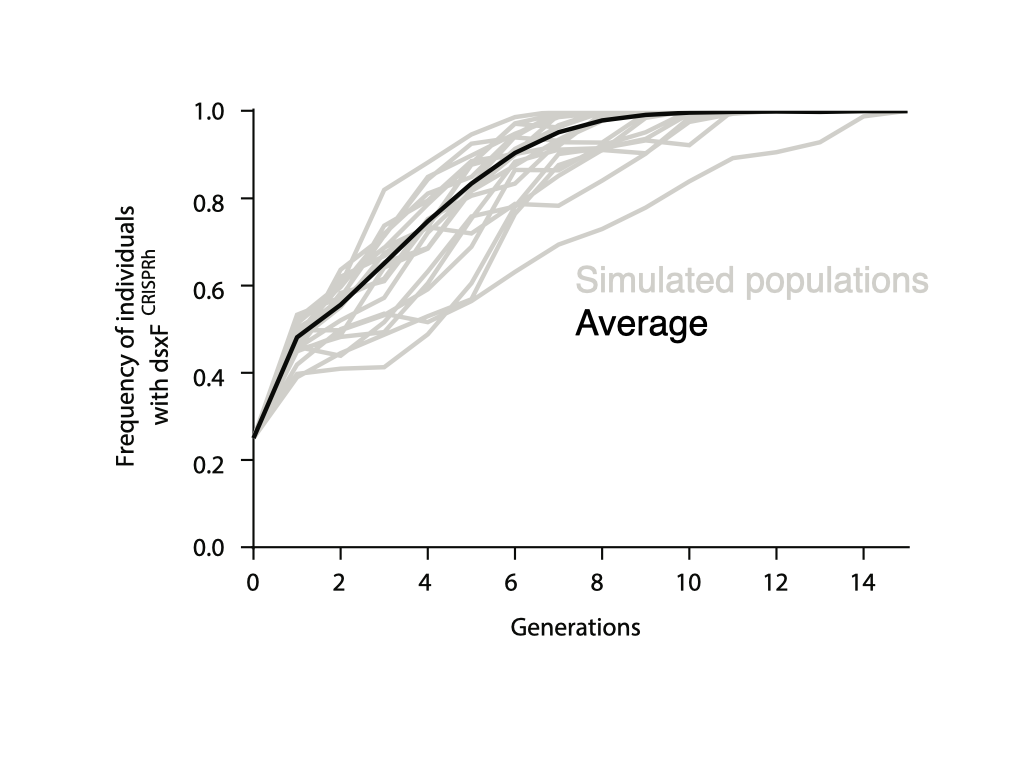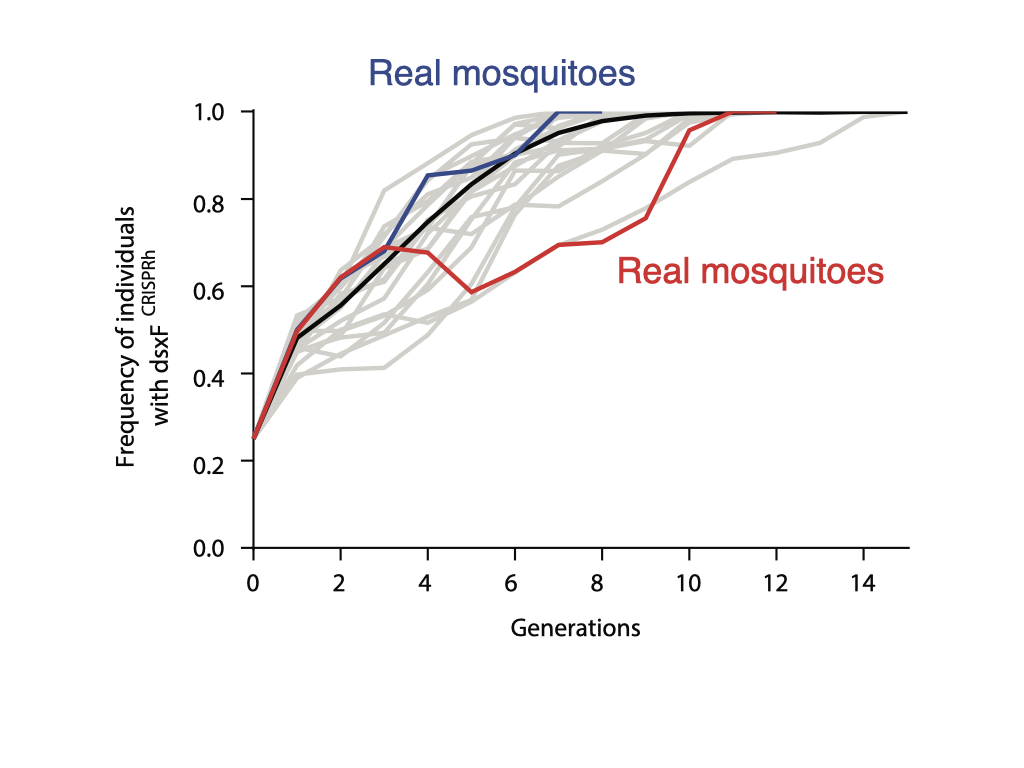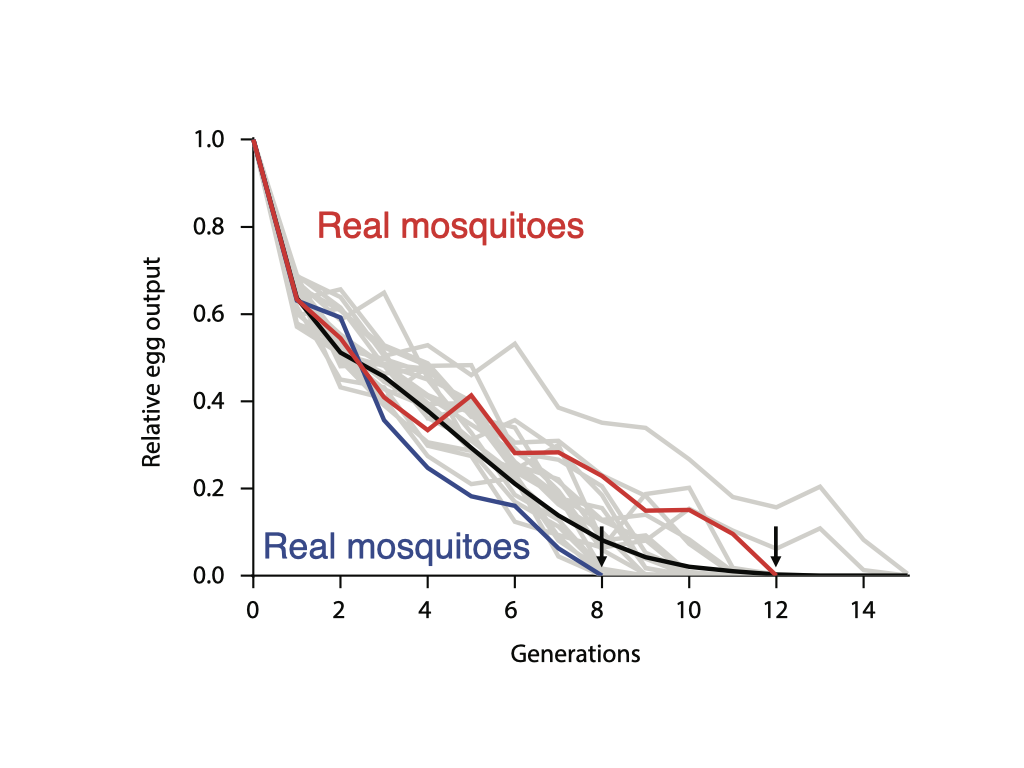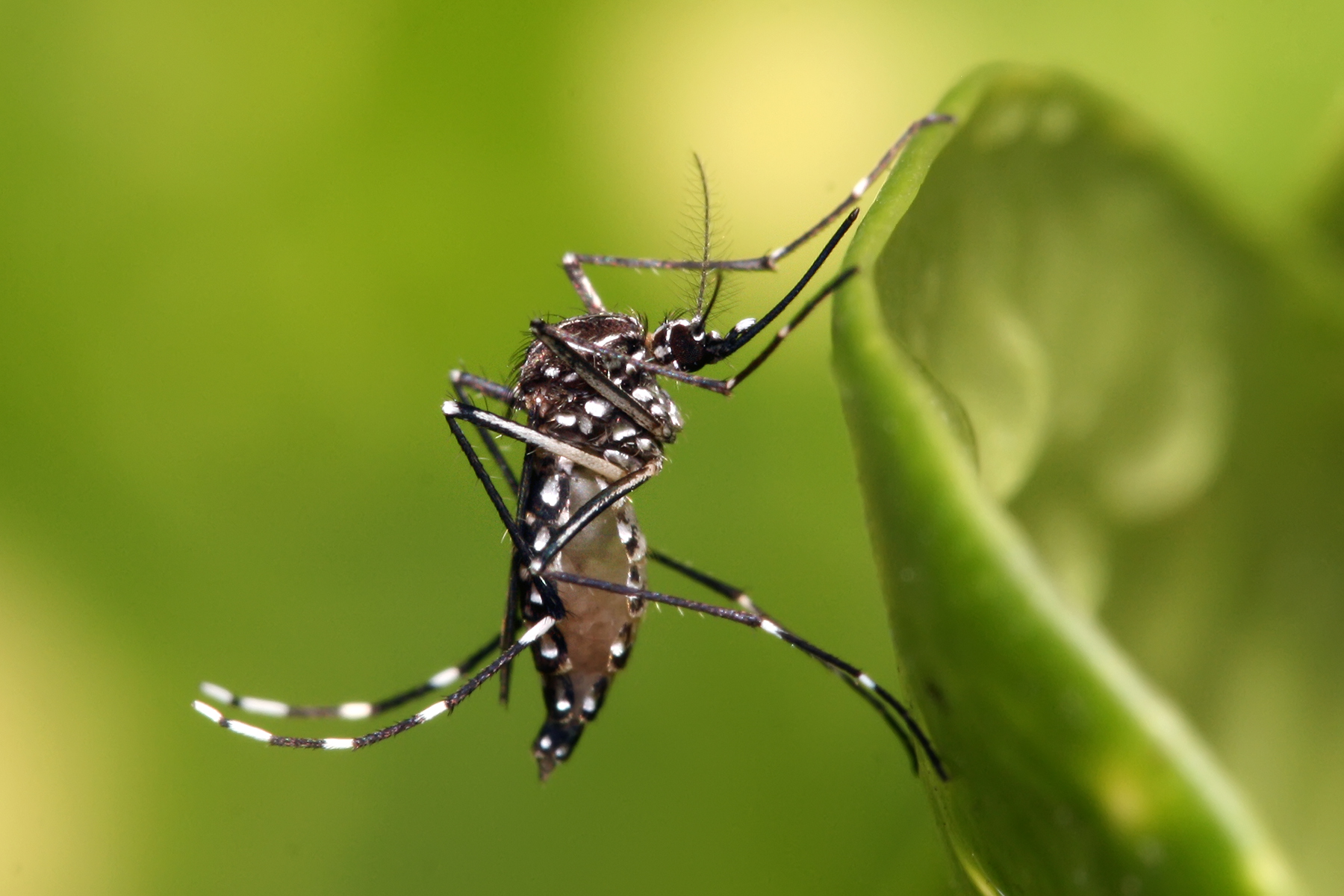9.7 Testing a surprising prediction
Use Ducks & Gators to check the accuracy of this startling prediction. Make sure you’re in the Monitor Evolution tab. Give the three genotypes different colors, and set things up so that the fitnesses are 0, 1, and 1. Here’s a visiual hint about how to do it:

Make sure your starting frequencies and fitnesses are the same in your analytical model as they are your duck population.
- Before you run your model, consider what will happen when an allele that renders homozygotes unable to reproduce reaches a frequency of 1.
Now run your model.
- Did your analytical model accurately predict how quickly the gene drive would rise to fixation? Did you accurately predict what would happen after that?
Run the model a few more times.
- How well does the theory of population genetics predict the influence of a fitness-reducing gene drive on the evolution of a population?
Kyrou and colleagues used a simulation model simular to Ducks & Gators to predict what would happen with their gene drive—which renders females infertile, but not males—in their mosquitoes:

Here is the same graph, along with data from two real populations of mosquitoes:

Here is what happened to reproductive output in the scientists’ simulation model as the gene drive increased in frequency:

Here is the same graph, along with data from the two real populations:

The gene drive not only drove the mosquito populations to extinction, it did so at the same timescale as predicted by theory.
At this point, I hope you’re thinking two things. First, I hope you’re impressed at how well the theory of population genetics works. Second, I hope you’re startled that evolutionary engineers now have the ability to drive populations to extinction!
Is an extinction-causing gene drive really something we want to be tinkering with?
Reasonable people disagree. Consider another mosquito, Aedes aegypti:

This mosquito spreads dengue fever, chikungunya, Zika fever, Mayaro and yellow fever viruses, plus other diseases. Now that we have a tool that can—in theory and in small laboratory populations—drive populations to extinction, should we try to get rid of this insect once and for all? Discuss amongst yourselves.